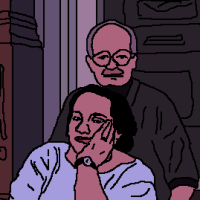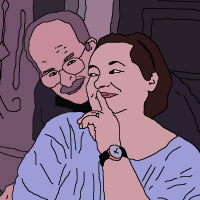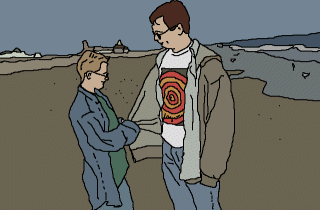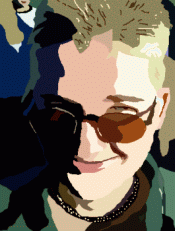

 It's summertime! And what did you used to do during summer? Go to camp!
And what did you do at camp? Make arts and crafts! So this is a digital
arts and crafts project for you to try.
An example of what you'll be making is here on the right: that's
me and Mo on the beach in Ocean Grove, New Jersey, and I think
it's a great and romantic shot. (You can see a few more
examples of the
method on kisrael.com)
For lack of a more imaginative
name, I call the images "flat color photos" though as you'll see,
it wouldn't be unfair to call it "tracing plus paint by number" (or,
as someone pointed out, "poor man's still frame rotoscoping".)
It's summertime! And what did you used to do during summer? Go to camp!
And what did you do at camp? Make arts and crafts! So this is a digital
arts and crafts project for you to try.
An example of what you'll be making is here on the right: that's
me and Mo on the beach in Ocean Grove, New Jersey, and I think
it's a great and romantic shot. (You can see a few more
examples of the
method on kisrael.com)
For lack of a more imaginative
name, I call the images "flat color photos" though as you'll see,
it wouldn't be unfair to call it "tracing plus paint by number" (or,
as someone pointed out, "poor man's still frame rotoscoping".)

|
| Thick brush |

|
| Thin brush |

|
| A slightly different technique |




